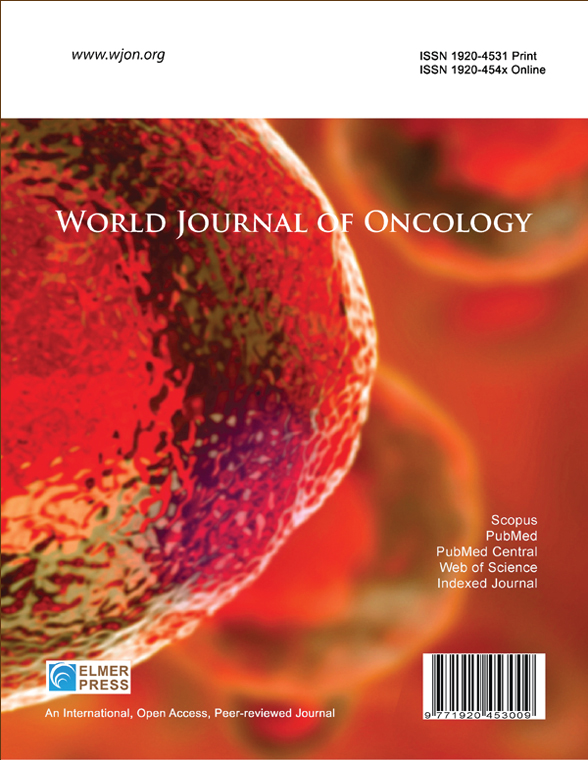Correlation Between PIK3R1 Expression and Cell Growth in Human Breast Cancer Cell Line BT-474 and Clinical Outcomes
DOI:
https://doi.org/10.14740/wjon1986Keywords:
Breast cancer, Genetic mutation, PIK3R1, Variants, MCF-7Abstract
Background: While mutations in the PIK3CA gene play important roles in human breast carcinogenesis, PIK3R1 gene alterations are recognized as actionable mutations for clinical cancer treatment. We aimed to elucidate the role of PIK3R1 in cell proliferation on breast carcinoma and to correlate the PIK3R1 expression with patients’ outcome using human tumor tissue arrays.
Methods: Using human BT-474 (estrogen receptor (ER)+/human epidermal growth factor receptor 2 (HER2)-high) breast carcinoma cell line as in vitro model, the role of PIK3R1 in cell proliferation was elucidated by knock-down of the PIK3R1 gene (ΔPIK3R1) in this cell line. Between January 2000 to December 2015, the records of a cohort of 440 patients in our hospital were retrospectively reviewed, including patients’ survival. The correlations between PIK3R1 expression and patient prognosis, such as overall survival (OS) and disease-free survival (DFS), were elucidated by human breast cancer tumor tissue array immunostaining.
Results: After the PIK3R1 gene was silenced in the BT-474 line, there was an increased cell number and a decrease in the G0G1-fraction, and increased S-fraction and the S+G2M-fraction for the ΔPIK3R1-BT-474 cell line, as compared to their cell wild type (WT) line. Western blot analysis showed that decreased PIK3R1 protein levels were accompanied by an increase of the p-AKT and p-mTOR proteins in the ΔPIK3R1-BT-474 cell line, compared to the equivalent WT line. Using a human tumor tissue array, patients with high-expressed PIK3R1 protein had better outcomes in terms of DFS and OS, compared to those with low-expressed PIK3R1 protein, when breast cancer was at an early stage (stage I/II), but not across all stages of breast cancer in human patients.
Conclusions: We concluded that downregulated PIK3R1 in BT-474 cells resulted in an increased cell growth and upregulated AKT-mTOR signaling. Clinically, the high-expressed PIK3R1 protein in tumors correlates positively with patients’ outcome in stage I and II breast cancer.

Published
Issue
Section
License
Copyright (c) 2024 The authors

This work is licensed under a Creative Commons Attribution-NonCommercial 4.0 International License.










